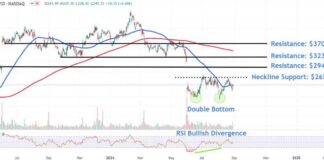Stock markets in both Europe and the US saw positive movements on Thursday following some strong earnings reports. Companies like Hermes, Barclays, Unilever, Renault, Tesla, and UPS posted good results, leading to a boost in investor confidence after a few days of uncertainty. The S&P500 and Nasdaq 100 in the US rose, with Tesla experiencing its best session in over a decade with a 22% jump. European indices like the DAX and Stoxx 600 also showed modest gains. Even troubled companies like Kering, which owns Gucci, saw an increase in their share prices despite warning of lower profits due to weak demand from China.
While the US earnings season is going well, Europe is facing some challenges. Economic data from the US is stronger compared to Europe, with recent PMI figures showing continued contraction in mainland Europe. The Eurozone’s inflation rate is below 2%, prompting speculation that the European Central Bank may increase its rate cuts soon. This has put pressure on the euro, causing it to weaken against the US dollar.
The divergence in outlook between the euro and the US dollar, along with concerns about trade relations between the two continents, has further weighed on the euro. There is a possibility that the ECB may implement a 50bp cut in its December meeting. The EURUSD pair is expected to face resistance at 1.0870 and 1.0935 as it continues its bearish trend.
In the UK, the British pound is also under pressure as the Bank of England Governor Bailey expresses dovish views on the bank’s policy. The pound is likely to remain weak as the country prepares for the upcoming Budget announcement, which could have implications for businesses and individuals.
In Japan, the yen is performing better, but the USDJPY pair remains above the 150 level. With the upcoming election weekend, there are risks of the ruling party losing its majority, which could impact the yen and Japanese stocks. The Bank of Japan is not expected to hike rates at its next policy meeting, keeping the yen under pressure.
In the energy market, US crude oil prices attempted to break the $72 per barrel level but faced resistance due to a build in US inventories. Despite recent challenges, there are upside risks in the oil market, especially with potential conflicts in the Middle East. Selling oil below $70 per barrel may not be a safe option for traders.
Overall, global markets are facing various challenges and uncertainties, which are reflected in currency and commodity movements. Investors need to remain cautious and stay informed about geopolitical and economic developments to make well-informed trading decisions.

















